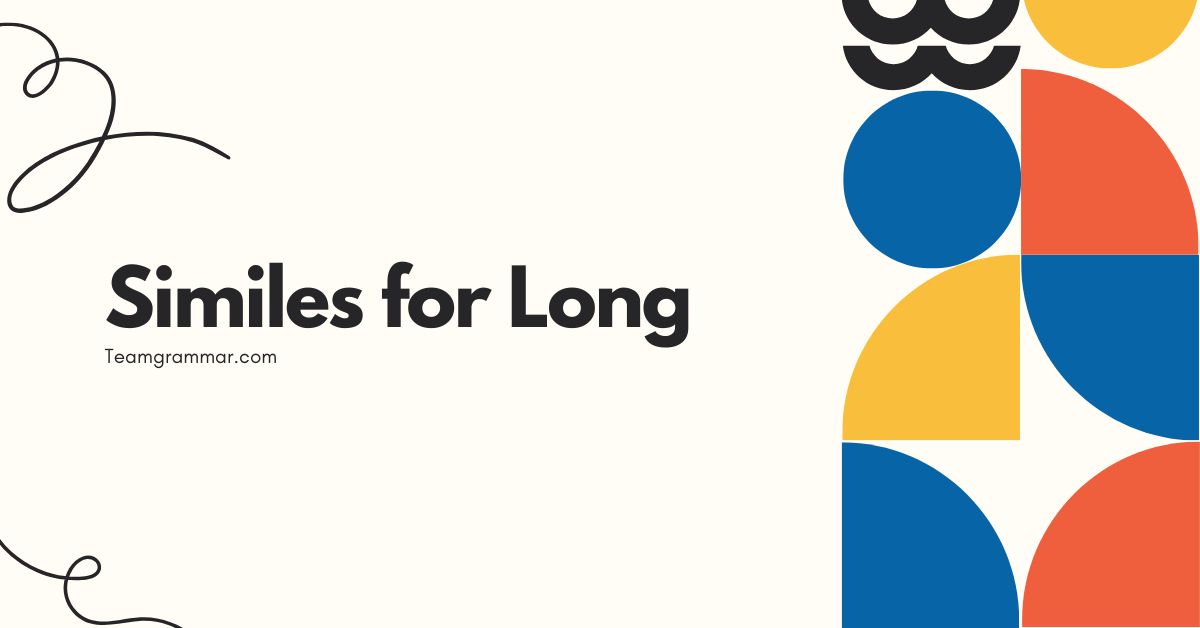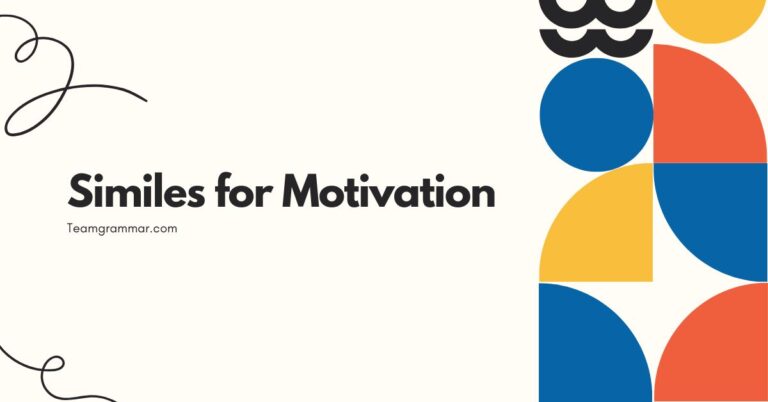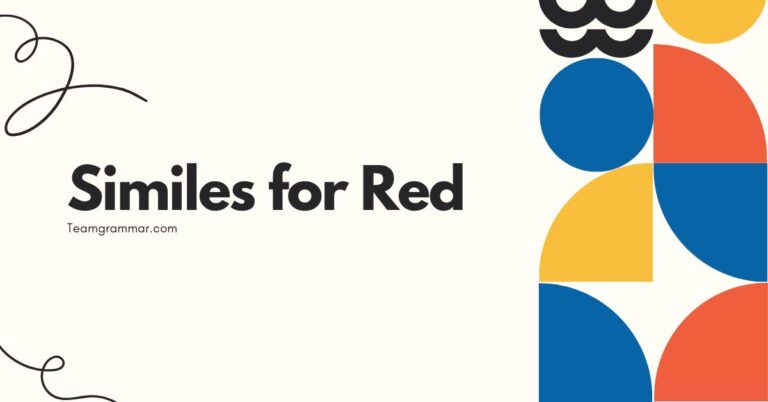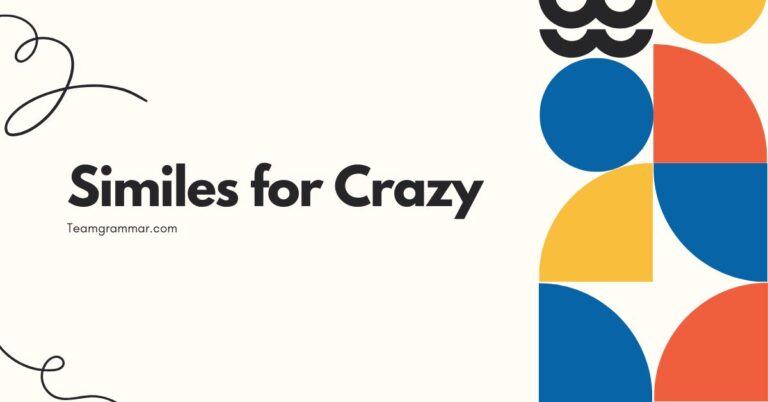49 Similes for Long: Mastering Figurative Language
Similes are powerful tools in the English language, allowing us to create vivid and relatable descriptions by comparing one thing to another using words like “like” or “as.” Understanding similes, particularly those related to the concept of “long,” enhances our expressive capabilities and adds depth to our writing and speech. This article provides a comprehensive guide to using similes for “long,” covering definitions, structural breakdowns, various types, usage rules, common mistakes, practice exercises, and advanced topics.
Whether you’re a student, writer, or language enthusiast, this guide will help you master the art of crafting effective and engaging similes.
Table of Contents
- Introduction
- Definition of Similes for “Long”
- Structural Breakdown of Similes
- Types and Categories of Similes for “Long”
- Examples of Similes for “Long”
- Usage Rules for Similes
- Common Mistakes with Similes
- Practice Exercises
- Advanced Topics in Similes
- Frequently Asked Questions (FAQ)
- Conclusion
Definition of Similes for “Long”
A simile is a figure of speech that compares two different things using the words “like” or “as.” The purpose of a simile is to create a vivid image or convey a specific feeling by highlighting the similarities between the two things being compared. When we talk about similes for “long,” we are referring to similes that describe something in terms of its length, duration, or extent.
These similes can be used to describe physical objects, periods of time, distances, or even abstract concepts.
In essence, similes for “long” help us to understand or emphasize the extended nature of something by relating it to something else that also possesses a quality of being long, either literally or figuratively. For example, we might say “as long as a football field” to describe a physical length or “as long as a year” to describe a duration of time.
The effectiveness of a simile depends on the clarity and relevance of the comparison, ensuring that the audience can readily grasp the intended meaning.
Structural Breakdown of Similes
The basic structure of a simile is quite simple, typically involving three key components. Understanding these components is crucial for constructing effective and meaningful similes.
The components are the subject, the comparison word (like or as), and the object of comparison.
1.Subject:This is the thing being described or compared. It could be a noun, pronoun, or even a more complex phrase.
For example, in the simile “The road was as long as a snake,” the subject is “The road.”
2.Comparison Word:This is the word that connects the subject to the object of comparison. The two most common comparison words are “like” and “as.” The choice between “like” and “as” is often stylistic and doesn’t significantly alter the meaning.
Using “like” is very common in informal writing and conversation, while “as” is often seen as more formal.
3.Object of Comparison:This is the thing to which the subject is being compared. It should have a quality or characteristic that is similar to the subject, allowing for a meaningful comparison.
In the example above, “a snake” is the object of comparison.
The structure can be summarized as:Subject + Comparison Word + Object of Comparison. Understanding this simple structure can help you create your own similes and analyze the effectiveness of similes used by others.
Let’s consider some examples to further illustrate this structure:
- As tall as a giraffe
- Like a never-ending story
- As long as a marathon
Types and Categories of Similes for “Long”
Similes for “long” can be categorized based on what aspect of “long” they are emphasizing. This helps in choosing the right simile to convey the intended meaning.
We can categorize them into similes of physical length, similes of duration, and similes of extent or scope. Each type serves a slightly different purpose and is applicable in different contexts.
Similes of Physical Length
These similes describe the physical length of something by comparing it to another object known for its length. They are often used to give a sense of scale or proportion.
The comparison is tangible and relates to physical dimensions.
Examples include: “as long as a football field,” “like a mile-long train,” and “as lengthy as the Amazon River.” These similes provide a clear visual of the length being described by referencing familiar objects or landmarks.
Similes of Duration
Similes of duration describe the length of time by comparing it to another period or event. They help to convey how long something lasts or feels.
These are often used to emphasize the perceived length of time, which can be subjective.
Examples include: “as long as a year,” “like an eternity,” and “as never-ending as a bad dream.” These similes add emotional weight to the description, conveying the speaker’s experience of time.
Similes of Extent or Scope
These similes describe the extent or scope of something, often referring to abstract concepts or intangible qualities. They convey the breadth or reach of something in a figurative way.
Examples include: “as long as my arm is wide,” “like the reach of my potential,” and “as extensive as my dreams.” These similes add a layer of metaphorical meaning to the description, expanding beyond literal length to encompass other dimensions.
Examples of Similes for “Long”
To further illustrate the use of similes for “long,” let’s explore several examples categorized by the types discussed above. These examples demonstrate the versatility and effectiveness of similes in conveying different aspects of “long.”
Examples of Similes of Physical Length
The following table provides examples of similes that describe physical length. These similes use familiar objects and landmarks to create a sense of scale.
| Simile | Explanation |
|---|---|
| As long as a football field | Describes a distance equal to the length of a standard football field. |
| Like a mile-long train | Indicates a very long train, stretching for a mile. |
| As lengthy as the Amazon River | Compares the length to one of the longest rivers in the world. |
| As long as a city block | Relates the length to a familiar urban distance. |
| Like a never-ending road | Suggests a road that seems to stretch on forever. |
| As stretched out as a rubber band | Implies something that is greatly extended in length. |
| As long as the Great Wall of China | Compares the length to a famous, extremely long structure. |
| Like a winding river | Describes something that meanders and extends in length. |
| As far as the eye can see | Suggests a distance that reaches the horizon. |
| As long as a transatlantic flight | Relates the length to a long-distance air journey. |
| Like the thread of Ariadne | References a long, guiding thread from Greek mythology. |
| As extended as a drawn sword | Implies a straight and significant length. |
| As elongated as a limousine | Compares the length to a long, luxurious vehicle. |
| Like a sprawling metropolis | Describes something that spreads out over a large area. |
| As limitless as the horizon | Suggests a boundary that cannot be reached. |
| As expansive as the ocean | Compares the length to the vastness of the sea. |
| Like a ribbon unspooled | Describes something that is unwound and extended. |
| As drawn out as taffy | Implies something stretched to its maximum length. |
| As protracted as a congressional debate | Relates the length to a notoriously long discussion. |
| Like an outstretched arm | Describes something that is fully extended. |
| As lengthy as a Shakespearean play | Compares the length to a long dramatic work. |
| Like the tail of a comet | Suggests a long, trailing extension. |
| As extensive as a library’s collection | Relates the length to a vast accumulation of books. |
| Like a spider web’s intricate strands | Describes something with many interconnected, long elements. |
Examples of Similes of Duration
The next table presents similes that describe the length of time. These similes often convey a sense of how long something feels, which can be subjective.
| Simile | Explanation |
|---|---|
| As long as a year | Indicates a period of 365 days. |
| Like an eternity | Suggests a period that feels infinitely long. |
| As never-ending as a bad dream | Compares the duration to a recurring, unpleasant dream. |
| As slow as molasses in January | Implies something is moving or progressing very slowly. |
| Like watching paint dry | Suggests an extremely boring and slow activity. |
| As tedious as counting grains of sand | Compares the duration to a monotonous and lengthy task. |
| Like waiting for Christmas | Suggests a period that feels long due to anticipation. |
| As drawn-out as a court case | Indicates a process that takes a considerable amount of time. |
| Like a marathon of meetings | Describes a series of meetings that feel exhausting and long. |
| As prolonged as a filibuster | Compares the duration to a long, obstructive speech. |
| Like a century of silence | Suggests a very long period of quiet or inactivity. |
| As lingering as a sweet memory | Implies a memory that stays with you for a long time. |
| Like a drawn-out sigh | Describes a sigh that is prolonged and expressive. |
| As protracted as a negotiation | Indicates a negotiation that takes a significant amount of time. |
| Like the age of the dinosaurs | Compares the duration to a very long geological era. |
| As enduring as a mountain range | Suggests a duration that lasts for a very long time. |
| Like a timeless echo | Describes something that continues to resonate over time. |
| As sustained as a musical note | Implies a sound that is held for a considerable duration. |
| Like a lingering sunset | Suggests a sunset that lasts for a long time. |
| As extended as a train delay | Compares the duration to a frustratingly long delay. |
| Like an unending winter | Describes a winter that feels like it will never end. |
| As persistent as a dripping faucet | Implies something that continues for a long time, often annoyingly. |
| Like the course of true love | Suggests a journey that is often long and complicated. |
| As lengthy as a legal proceeding | Compares the duration to a time-consuming legal process. |
Examples of Similes of Extent or Scope
The following table provides examples of similes that describe extent or scope. These similes often refer to abstract concepts or intangible qualities.
| Simile | Explanation |
|---|---|
| As long as my arm is wide | Indicates a measurement that is relative to the speaker. |
| Like the reach of my potential | Suggests the extent of one’s capabilities. |
| As extensive as my dreams | Compares the scope to the vastness of one’s aspirations. |
| As wide as the world | Implies a scope that encompasses everything. |
| Like an endless sea of possibilities | Suggests a vast array of choices or opportunities. |
| As far-reaching as the internet | Compares the scope to the global network of information. |
| Like a boundless imagination | Describes an imagination that has no limits. |
| As comprehensive as an encyclopedia | Indicates a thorough and complete coverage of a subject. |
| Like the span of history | Suggests a scope that encompasses all of recorded time. |
| As deep as the ocean | Compares the depth of something to the vastness of the sea. |
| Like a universe of knowledge | Describes a vast and complex body of information. |
| As broad as a philosophical debate | Compares the scope to a wide-ranging discussion. |
| Like the extent of human understanding | Suggests the limits of what we can know. |
| As vast as the open sky | Compares the scope to the limitless expanse above us. |
| Like an unending quest for knowledge | Describes a pursuit that continues without end. |
| As all-encompassing as love | Suggests a scope that includes everything. |
| Like the full spectrum of emotions | Describes a range that includes all possible feelings. |
| As intricate as a spiderweb | Compares the complexity to the delicate structure of a spiderweb. |
| Like the tapestry of life | Suggests a rich and complex pattern of experiences. |
| As pervasive as social media | Compares the reach to the widespread influence of social media. |
| Like the scope of a grand symphony | Describes a work that encompasses a wide range of elements. |
| As resonant as a powerful speech | Compares the impact to a speech that has a lasting effect. |
| Like the influence of a great leader | Suggests a scope that extends to many people. |
| As far-reaching as the effects of climate change | Compares the scope to the global impact of environmental issues. |
Usage Rules for Similes
Using similes effectively involves following a few key rules to ensure clarity and impact. Here are some important guidelines to keep in mind when crafting similes:
1. Clarity:The comparison should be clear and easily understood by the audience.
Avoid obscure or overly complex comparisons that may confuse the reader or listener. The object of comparison should be something that the audience is familiar with.
2. Relevance:The comparison should be relevant to the subject being described.
There should be a clear connection between the subject and the object of comparison. The shared characteristic should be easily recognizable and contribute to the overall meaning.
3. Originality:While common similes can be effective, strive for originality to make your writing more engaging and memorable.
Overused similes can become clichés and lose their impact. Try to find fresh and creative comparisons that will surprise and delight your audience.
4. Context:Consider the context in which the simile is being used.
The appropriateness of a simile depends on the tone, style, and audience of the writing. A simile that works well in one context may be inappropriate in another.
5. Avoid Mixed Metaphors:Be careful not to mix metaphors or similes in a way that creates a confusing or contradictory image.
Mixed metaphors can undermine the clarity and effectiveness of your writing.
6. Proper Use of “Like” and “As”:Ensure that you are using “like” and “as” correctly.
“Like” is typically used to compare nouns or pronouns, while “as” is used to compare clauses or phrases. However, in informal usage, “like” is often used interchangeably with “as.”
Common Mistakes with Similes
Even experienced writers can make mistakes when using similes. Being aware of these common errors can help you avoid them and improve the quality of your writing.
1. Clichés:Overusing common similes can make your writing sound unoriginal and predictable.
Examples of clichés include “as blind as a bat” or “as strong as an ox.” While these similes are easily understood, they lack impact and creativity.
Correct: The journey felt as long as a quest to find a lost city.
Incorrect: The journey felt as long as an arm.
2. Inaccurate Comparisons:A simile should make a logical and accurate comparison.
If the comparison is flawed or nonsensical, it will confuse the reader and undermine the effectiveness of the simile.
Correct: The speech was as long as a feature film.
Incorrect: The speech was as long as a grain of rice.
3. Overly Complex Similes:Keep your similes clear and concise.
Overly complex or convoluted similes can be difficult to understand and may distract from your message.
Correct: The explanation was as clear as a bell.
Incorrect: The explanation was as clear as the resonating sound of a perfectly struck bell on a still morning.
4. Mixed Metaphors:Avoid combining metaphors or similes in a way that creates a confusing or contradictory image.
Mixed metaphors can undermine the clarity and effectiveness of your writing.
Correct: Her patience was as long as a piece of string.
Incorrect: Her patience was as long as a piece of string, but it was also running on fumes. (Mixing simile with a metaphor)
5. Redundancy:Avoid using similes that are redundant or state the obvious.
The purpose of a simile is to add depth and insight to your writing, not to restate something that is already clear.
Correct: The lecture was as long as a full symphony.
Incorrect: The lecture was as long as it was lengthy.
Practice Exercises
Test your understanding of similes for “long” with the following exercises. For each question, choose the best simile to complete the sentence or identify the error in the given simile.
Exercise 1: Completing Sentences
Choose the best simile to complete each sentence.
| Question | Options | Answer |
|---|---|---|
| The line at the DMV was _____. | a) as short as a tweet, b) as long as a football field, c) as quick as a flash | b) as long as a football field |
| Waiting for the test results felt _____. | a) like a brief moment, b) like an eternity, c) like a walk in the park | b) like an eternity |
| The project seemed _____. | a) as easy as pie, b) as never-ending as a bad dream, c) as simple as ABC | b) as never-ending as a bad dream |
| The movie was _____. | a) as short as a commercial, b) as long as a short film, c) as lengthy as a Shakespearean play | c) as lengthy as a Shakespearean play |
| The explanation was _____. | a) as brief as a whisper, b) as comprehensive as an encyclopedia, c) as concise as a haiku | b) as comprehensive as an encyclopedia |
| The reach of her influence was _____. | a) like a small ripple, b) as far-reaching as the internet, c) like a localized event | b) as far-reaching as the internet |
| The debate was _____. | a) as short as a sound bite, b) as broad as a philosophical debate, c) as narrow as a focus group | b) as broad as a philosophical debate |
| The quest for knowledge is _____. | a) like a brief search, b) like an unending quest, c) like a simple task | b) like an unending quest |
| The effects of climate change are _____. | a) like a minor inconvenience, b) as far-reaching as the effects of climate change, c) like a localized issue | b) as far-reaching as the effects of climate change |
| The course correction felt _____. | a) like a brief moment, b) like an eternity, c) like a day at the beach | b) like an eternity |
Exercise 2: Identifying Errors
Identify the error in each simile and explain why it is incorrect.
| Simile | Error | Explanation |
|---|---|---|
| The lecture was as long as it was lengthy. | Redundancy | The simile is redundant because “long” and “lengthy” have the same meaning. |
| Her patience was as long as a piece of string, but it was also running on fumes. | Mixed Metaphor | The simile is mixed with a metaphor, creating a confusing image. |
| The speech was as long as a grain of rice. | Inaccurate Comparison | The comparison is inaccurate because a speech cannot be as small as a grain of rice. |
| The journey felt as long as an arm. | Inaccurate Comparison | The comparison is inaccurate because a journey cannot be compared to the length of an arm. |
| The explanation was as clear as the resonating sound of a perfectly struck bell on a still morning. | Overly Complex | The simile is overly complex and difficult to understand. |
| The class felt as long as a short film. | Inaccurate Comparison | Short films are not thought of as being particularly long. |
| The process was as fast as molasses. | Inaccurate Comparison | Molasses is well known for being slow, not fast. |
| The river was like a short string. | Inaccurate Comparison | Rivers are known for being long and winding, not short. |
| The song was like an hour of noise. | Overly Complex | The wordy simile is not needed, a simple description would be better. |
| The book was as long as my shirt. | Inaccurate Comparison | The comparison is inaccurate because the length of a book and a shirt are not related. |
Advanced Topics in Similes
For advanced learners, exploring the nuances of similes can lead to a deeper appreciation of their artistic and rhetorical potential. Here are some advanced topics to consider:
1. Extended Similes:An extended simile is a simile that is developed over several lines or even paragraphs.
It allows for a more detailed and nuanced comparison, creating a richer and more vivid image in the reader’s mind. Extended similes are often used in poetry and literary prose to add depth and complexity to the writing.
2. Subverted Similes:A subverted simile is a simile that intentionally violates the expectations of the reader.
It may use an unexpected or unconventional comparison to create a surprising or humorous effect. Subverted similes can be used to challenge conventional thinking and offer a fresh perspective on a subject.
3. Similes in Different Genres:The use of similes can vary depending on the genre of writing.
In poetry, similes are often used to create imagery and evoke emotions. In scientific writing, similes may be used to explain complex concepts in a more accessible way.
Understanding how similes are used in different genres can help you tailor your writing to a specific audience and purpose.
4. Cultural and Linguistic Considerations:The effectiveness of a simile can depend on the cultural and linguistic background of the audience.
A simile that is easily understood in one culture may be confusing or offensive in another. It is important to be aware of these cultural and linguistic considerations when using similes in your writing.
Frequently Asked Questions (FAQ)
Here are some frequently asked questions about similes for “long”:
1. What is the difference between a simile and a metaphor?
A simile compares two things using “like” or “as,” while a metaphor directly equates two things without using these words. For example, “The road was as long as a snake” is a simile, while “The road was a snake winding through the hills” is a metaphor.
2. Can a simile be too long?
Yes, a simile can be too long if it becomes overly complex or convoluted. The goal of a simile is to create a clear and concise comparison, so it is important to avoid unnecessary details or digressions.
3. How can I make my similes more original?
To make your similes more original, try to think outside the box and find unexpected or unconventional comparisons. Avoid overused clichés and strive for fresh and creative imagery.
4. Is it okay to use similes in formal writing?
Yes, similes can be used in formal writing, but it is important to use them judiciously and ensure that they are appropriate for the tone and style of the writing. Avoid overly informal or colloquial similes in formal contexts.
5. How do I know if a simile is effective?
An effective simile should be clear, relevant, and original. It should create a vivid image in the reader’s mind and enhance their understanding of the subject being described.
If a simile is confusing or nonsensical, it is not effective.
6. What are some common mistakes to avoid when using similes?
Some common mistakes to avoid include using clichés, making inaccurate comparisons, creating overly complex similes, mixing metaphors, and being redundant.
7. Can I use similes in spoken language?
Yes, similes are commonly used in spoken language to add emphasis and create vivid descriptions. However, it is important to be mindful of your audience and avoid using similes that may be confusing or offensive.
8. How do I decide whether to use “like” or “as” in a simile?
Generally, “like” is used to compare nouns or pronouns, while “as” is used to compare clauses or phrases. For example, “He runs like a cheetah” (comparing nouns) and “He runs as fast as a cheetah” (comparing clauses).
However, in informal usage, “like” is often used interchangeably with “as.”
9. Can a simile compare abstract concepts?
Yes, similes can be used to compare abstract concepts. For example, “Love is like a warm blanket on a cold day” compares the abstract concept of love to the tangible experience of feeling warm and comfortable.
10. Is it possible to overuse similes in writing?
Yes, it is possible to overuse similes in writing. Overusing similes can make your writing sound forced and unnatural.
It is important to use similes sparingly and only when they add value to your writing.
Conclusion
Mastering the use of similes for “long” involves understanding their structure, recognizing different types, following usage rules, and avoiding common mistakes. By practicing these skills, you can enhance your ability to create vivid and engaging descriptions in your writing and speech.
Similes are powerful tools for conveying meaning and adding depth to your communication.
Remember to focus on clarity, relevance, and originality when crafting similes. Strive to find fresh and creative comparisons that will resonate with your audience and make your writing more memorable.
With practice and attention to detail, you can become proficient in the art of using similes to express the concept of “long” in a compelling and effective way. Keep exploring, experimenting, and refining your skills to unlock the full potential of this versatile figure of speech.







